How To Sharpen Lawn Mower Blades: 4 Tips & Tricks
-
Pete Ortiz
- Last updated:
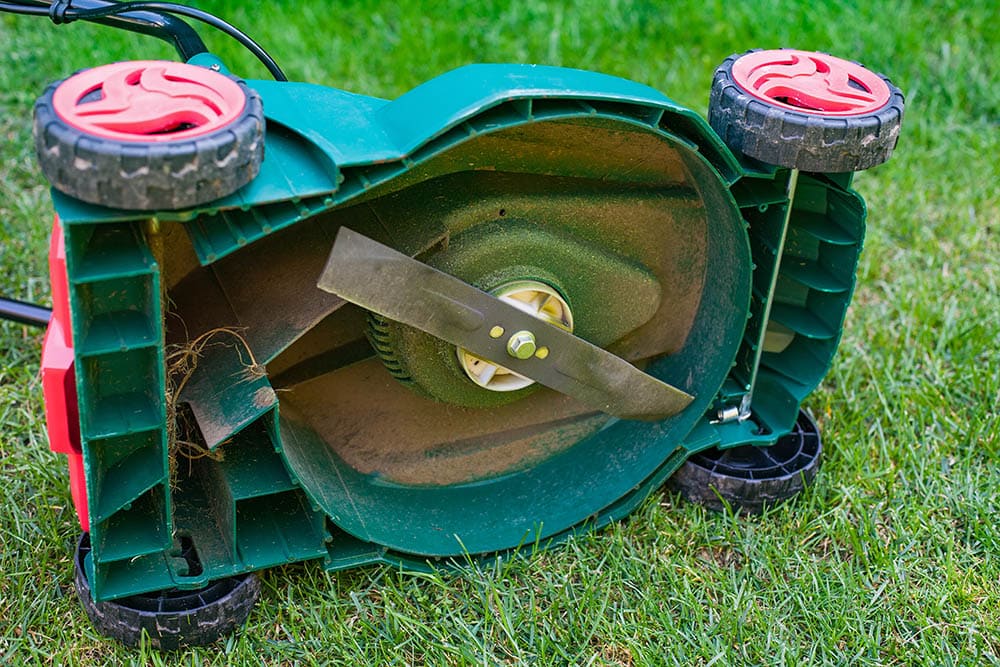
Most garden lovers know that If you want a beautiful and tidy lawn, you must dedicate a lot of time and effort. The appearance of your lawn depends on several factors that you must meet, and one of them is the regular mowing of the grass with well-sharpened mower blades.
Although mower blades are usually made of high-quality steel, you must continuously sharpen them to maintain a sharp cutting edge. Fortunately, sharpening the blade doesn’t require special skills and equipment, and today you’ll learn how to quickly and effortlessly sharpen the mower blade by yourself.
The Importance of Maintaining Sharp Blades on Lawn Mowers
If you want to maintain a fresh garden, the blade’s cut should be straight and neat. To achieve this, you will need to have a well-sharpened blade. The main advantage of regularly sharpening the blade on your mower is that your lawn will look clean and flawless. A dull blade on a lawn mower can still cut the grass, although it can’t clip it correctly; instead, it tears it up and makes your lawn look messy. A few days after mowing, the grass will wither for a few more weeks.
Different Ways of Sharpening the Blade on a Lawn Mower
After removing the blade from a lawn mower, you must properly assess its condition. Mower blades usually undergo heat treatment to increase hardness. If the blade is deformed or curved during use, you can level it with a hammer on a flat, hard surface. The best option would be to use a blacksmith’s anvil or some similar metal flat surface.
- With a small angle grinder
- Sharpening with a hand file
- Using a bench grinder
After straightening the blade and removing any potential dents, you can start with sharpening. Depending on the amount of damage, you can select an appropriate tool to work with. Whichever option you choose, bench clamps are recommended to secure the blade in position.
Using a small angle grinder
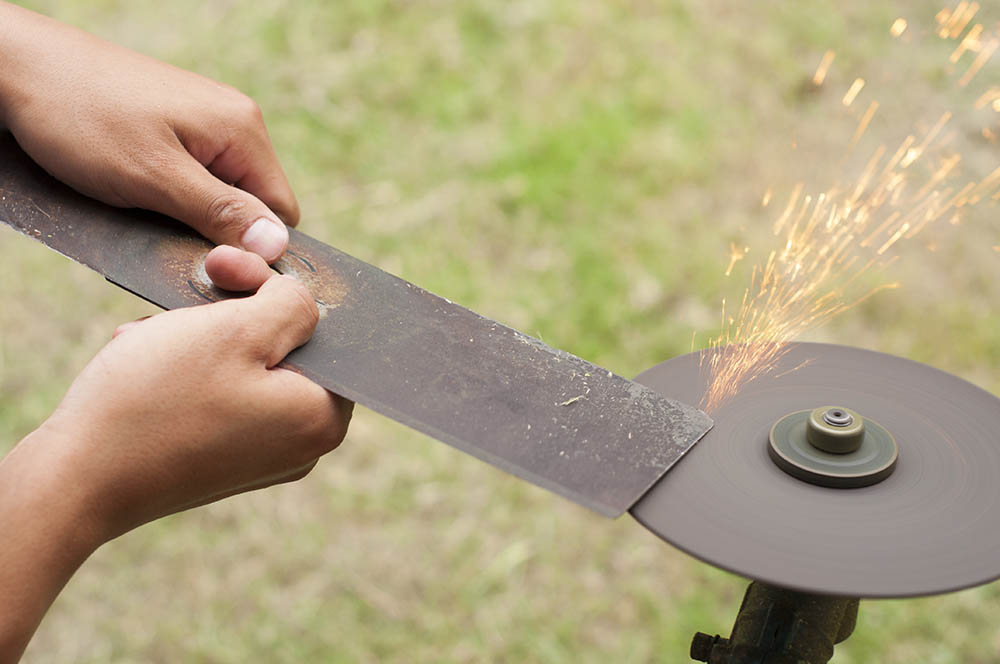
Using a small angle grinder to sharpen your mowing blade is one of the simplest techniques for sharpening. Sharpening the blade with an angle grinder is relatively quick and easy. All you need to do is match the existing angle of the blade and refine it. This tool will allow you to sharpen your blades with minimal time and money spent.
Sharpening with a hand file
Manual sharpening requires physical effort and time, although it doesn’t mean it is not a rewarding process. You can start by tightening the blade in the clamp and sharpening the cutting edge with a hand file while matching the existing angle of the blade. File until the blade is sharp or until all the rounding of the blade—created by hitting hard objects during mowing, such as stone, concrete, or wood—disappears. Mower blades are made of high-quality steel that can be easily processed with a file so that you can sharpen it with less than 50 strokes and a file about 10 inches long.
Sharpening with a bench grinder
If you decide to go for a bench grinder, make sure to use coarse-grained stone on the machine. Place the blade in the proper position to achieve an optimum sharpening angle. Work the cutting edges until they are completely aligned. Then use a stone to achieve finer granulation and sharpen to the required quality. It is essential to sharpen with smooth movement without sudden stops or turns. The grinding operation can overheat the metal edges, so during grinding, it is necessary to cool the area you are sharpening with water.
The 4 Tips for Sharpening Lawn Mower Blades
1. Gather all the necessary tools first

Before beginning this project, it’s necessary to acquire all the tools needed. Depending on which method of sharpening you choose.
- A screwdriver and a wrench to remove the blade
- A bench clamp
- Working gloves
- Eye protection
- Protective mask
- A file or a grinder (if sharpened by hand)
- An angle grinder
2. Follow all safety precautions
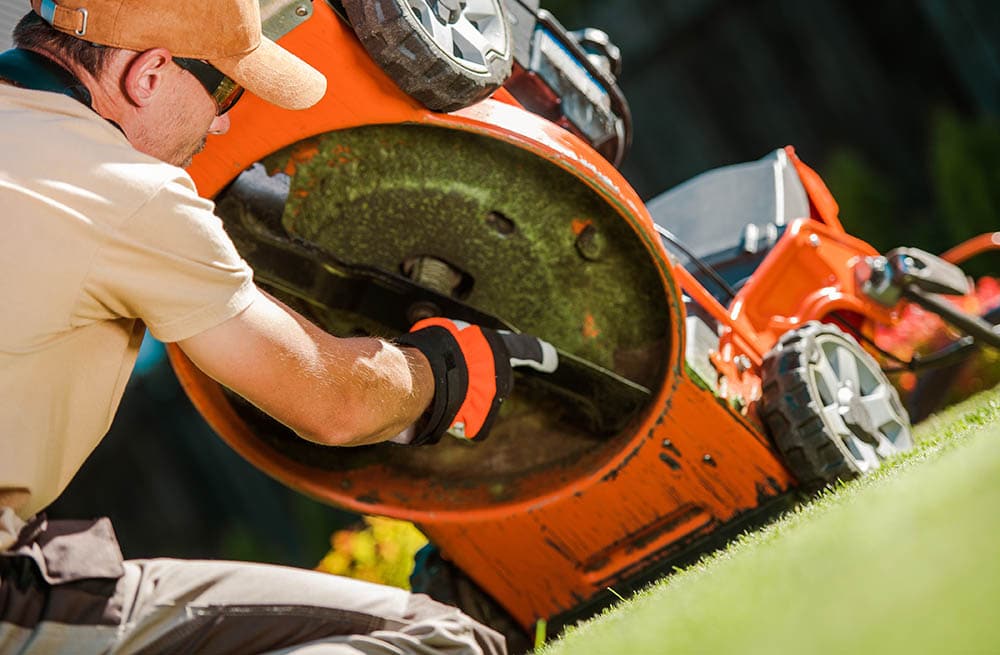
Before removing the blade from the mower, you must ensure your safety and the safety of those around you. If the device is electrically powered, disconnect it from the power source. It is crucial to wear eye protection, a face mask, protective gloves, and long sleeves. Sharpening machines such as bench grinders tend to disperse tiny particles and debris at a very high speed, which can cause injury to anyone nearby.
3. Carefully remove the blade
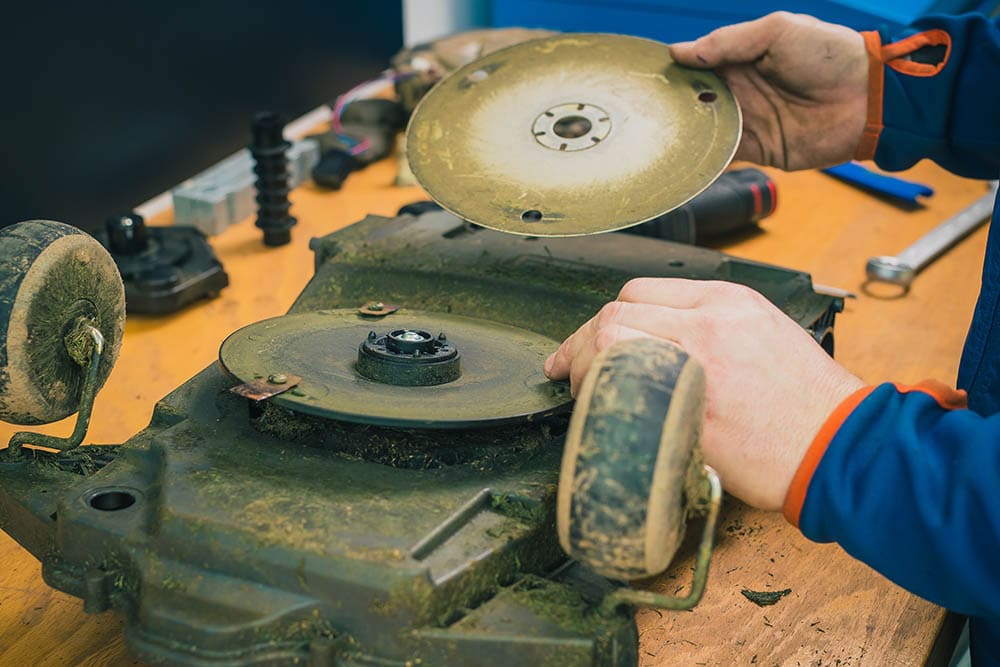
Once you disassemble the mower, cleaning it from debris such as clumps of grass or mud is essential. The easiest way to do that is to use a metal brush. The blade’s surface should be clean on all sides. Not to a metallic shine, but at least without impurities. Most blades are not flat and you can expect the cutting edge and the rest of the blade surface to be slightly deformed and curved due to frequent use.
Many blade models are fastened with screws in the middle, which you would have to unscrew with a wrench. If unscrewing is difficult for any reason, many tools are available on the market.
4. Attach the blade back to the mower
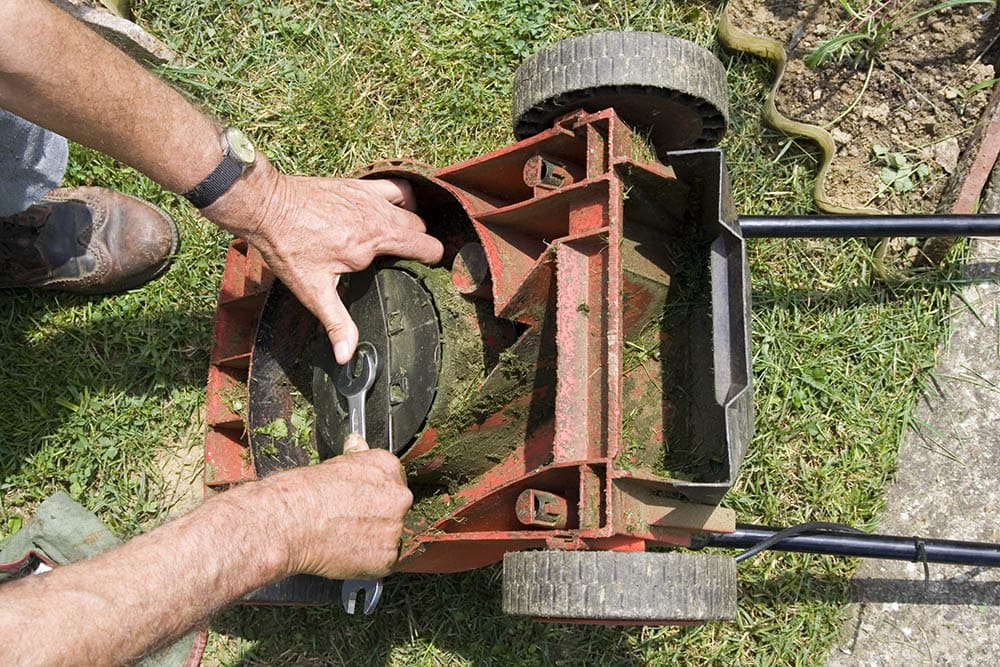
Once you clean and sharpen the blade, you can re-attach it to your mower while ensuring the fastening screw is as tight as possible. It is essential to secure the screw tightly because a loose screw can make it challenging to start and run your mower. You can only proceed to attach the spark plug after properly attaching the blade.
How to Maintain a Sharp Blade
No matter how often you use your lawn mower, the blades can wear out, bend, and get damaged. This happens either after frequently using the mower or as a result of hitting objects such as stones, trees, and other wooden and metal objects. The blade should be inspected regularly as a broken or damaged blade can become a safety hazard and potentially damage the mower.
One way to help reduce the damage to the blade is to inspect the area you intend to mow and remove any foreign objects that may interfere with the blade. Avoid rocky areas and getting too close to stumps, debris, and concrete, which can cause severe damage.
How Long Will The Blade Stay Sharp?
Under normal conditions, it is recommended to sharpen the lawn mower’s blade after 20–25 hours of mowing. Sharpening will occur once every 4 months for those who mow large areas frequently. In contrast, sharpening is likely to happen only once a year for smaller gardens and operators who mow less regularly.
You will probably notice thin notches that appear over time due to wear and tear, and such cracks can be removed by simply sharpening the blade. However, it is time to change the blade if you notice larger dents or bulges that bend even a minor part of the blade up or down.
Another indicator to check is the grass itself—look carefully at the edge of the grass to see how clean the blade’s cut is, and if you see that the edge of the grass is worn and broken, it is time to sharpen the blade.
Final Thoughts
Depending on how often you use your mower, you should sharpen the mower blade at least once or twice a year. Blunt blades not only slow down your lawn mower but can also make your lawn susceptible to browning and wilting. The good news is that the blades are relatively easy to sharpen to keep your yard looking neat and the mower running smoothly.
Featured Image Credit: Ocskay Mark, Shutterstock
Contents



